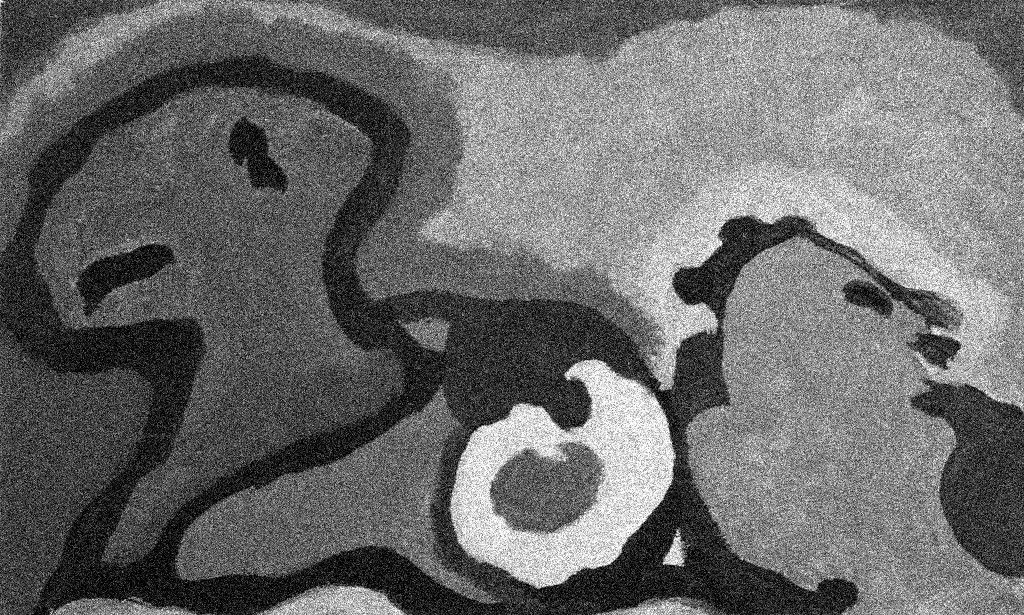It might take a while before history starts again
COVID is killing the old order left populists fought against, but only at the cost of postponing the new.

It seems almost impossible to write a ‘history of the present’ when the present itself has become so diffuse. Much like how the Marxist theory of history felt obsolete in an age after history, the unfolding corona crisis is always one step ahead of us in its awesome abstractions: 50% cut in GDP, 30% unemployment, 5 trillion dollar stimulus, 15 million jobs lost. ‘History’ is clearly taking place, but maybe we barely remember what ‘history’ means anymore.
What would a pre-history of the COVID age look like, though, and how would it relate to the preceding decade of ‘populist explosions’? Left populism almost feels like it is receding into history, rendered irrelevant by two weeks of global panic. Left populists are hardly part of the anti-virus response, for instance. Podemos is requisitioning private hospitals in Spain, but Corbyn, Melenchon and Die Linke have all been sidelined. The right is in power in much of the continent.
But the lessons of left populism are important enough—the 2020s are the product of the 2010s, and everything happening today was prepared in the previous decade. COVID capitalism will be the bastard child of the ‘populist explosion.’
In a recent Damage essay, Benjamin Fife and Taylor Hines examined the left-populist response to the crisis of neoliberalism in the 2010s, and in what sense the latter fell short. Their piece undoubtedly is one of the deepest engagements with the populist question available. Rather than make facile dismissals, they seek to understand the rationality of left populism in its own time—to find the ‘truth’ in the ‘false’, so to speak. As they note, “the appeal of left populism today does not reside in its historical or strategic correctness but in the way this model of political organizing fits the contours of our hard and hollow environment.” Attempts to retrieve a more valuable ‘historical’ populism in the end fall into a “clinical” trap, which recognizes the deficits of contemporary variants of left populism but fails to recognize their attractiveness. ‘Populism’, like a protective auto-immune reaction, is both a product and a symptom of the very neoliberal age. Pointing out its shortcomings or digging up archaeological alternatives is not enough. As Fife and Hines note, “instead of delegitimizing contemporary left populism on the grounds of its historical ignorance”, the real task “should be to call attention to its strategic shortcomings and its misapprehension of the root causes of oppression in capitalist society.”
Fife and Hines’s critique is cutting enough. Their extension of the ‘hard but hollow’ frame outside of a political into a psychoanalytic register is daring but fruitful, as it is a good tool for understanding what is happening now. Given the COVID crisis, it pays to take a step back and see whether this frame can be repurposed for a new canvas.
The aim of contemporary left populism was to rethink mobilization for an age of demobilization. In this sense populism was the product of a ‘hard but hollow’ environment, an attempt to break the iron grip of the neoliberal state with little to no resources at our disposal to do so. The neoliberal state started as an interventionist experiment to shield the market from mass democracy; this was its avowedly ‘hard’ side. But it could not do so while remaining beholden to a variety of popular interest groups, which were clamouring for checks on that very market. Therefore it also had to be ‘hollow’, undone of its ties to social actors below. Mass party democracy was hampering a renewed drive to capital accumulation; the only solution was to neutralize the state and turn it from an active player into an impartial arbiter. This cutting operation was as drastic on the right as it was on the left; as James Heartfield describes it:
To defeat the working-class challenge of the seventies, the elite tore up the old institutions that bound the masses to the state. Class conflict was institutionalized under the old system, which not only contained working class opposition but also helped the ruling class to formulate a common outlook. What started as an offensive against working class solidarity in the eighties undermined the institutions that bound society together. Not just trade unions and socialist parties were undermined, but so too were right-wing political parties and their traditional support bases amongst church and farmers’ groups. Middle class professional groups lost their privileged position.
The result was the infamous ‘void’ described by the Irish political scientist Peter Mair—a ‘demobilized’ citizenry forced to rely on the market for meaning and survival, only taking cues from the state as to how to maximize its competitive positioning. Collective agency was abdicated to globalization, and institutions were passé. In the 1990s the majority of the left wilfully participated in this shift, trading working classes for ‘multitudes’, and the market for ‘the network.’
Populism tried to take stock of this new situation by building on this void. This is unsurprising: men make their own history, but not in circumstances of their own choosing. Any critique of left populism which does not account for this fact will be of little help to us today. The scholarly term for this ‘hard but hollow’ environment is ‘disintermediation.’ Parties had atrophied, unions lost members, churches ran empty. After 2008 the process was hardly reversed. The left first hoped that mass misery would breed mass militancy, but this response failed to materialize. When no class came into being, a collective collage of identities seemed to offer succour, as Fife and Hines note. But such a collage always had a strong anti-materialist bent and therefore missed the very crux of the austerity moment. “Because left populists (did) not locate oppression as the result of non-subjective structural dynamics”, they note, and “see class as just another identity category, the left populist project becomes not a confrontation between classes” but instead “a sort of amorphous yelling for recognition that, if we believe in it, will magically change culture.” From Occupy to the clown posse, the affirmative festival was the primary figure of our age.
The corona crisis is vastly different from the 2008 crash, however. If 2008 consisted of dimming the lights after an electric fault, this is more like pulling the plug. The festivals of the 2000s might have resembled labour camps, but they could not do with any social distancing—the point was to generate the illusion of ‘massness’ in an age after mass politics. The corona crisis, however, is the final solvent of the ‘masses’.
The left’s real trauma might be that neoliberalism died without them actually killing it. ‘Agency’ now seems to reside with an inhuman agent, reminiscent of Heidegger’s claim that ‘only a God could save us now.’ The left waited for ten years for someone to finally bury the neoliberal settlement; no one arose, and now an extra-human agent will take care of it.
Capitalism has always had ‘private’ and ‘public’ moments. As Howard Brick noted in his Transcending Capitalism, “there is a two-sidedness to capitalist social development that socializes and privatizes simultaneously.” The ambiguity of capitalist “social development,” therefore, is that it “may spawn an illusory faith in the progressive promise of the status quo, but it also fosters the confidence, at the heart of Marx’s historical vision, that a break toward a new, genuinely ‘associated’ mode of production can follow on the basis of institutional resources provided by capitalism itself.” We are clearly now moving from a private into a public capitalism, and it is tempting to view the moment like Karl Polanyi, who saw a twisted hope in the fascist ‘counter-movements’ which arose in the 1930s. The very tension between property relations and productive relations is what drives the system forwards; contractions and expansions are a part of its very nature.
Undoubtedly capitalism’s public moments are objectively more interesting to the left than the private ones. But they will always be a necessary but insufficient condition of positive change—also needed of course are left strategy and organizing. Left populists didn’t think the politics of class were enough, so they sought to craft a cross-class coalition against austerity. This strategy underestimated both the desire for normality in part of the population and the desire for agency in another (think Biden, Trump).
Now the politics of survival will create a new universal, precarious subject. This subject can hardly claim more independence and now just wants bare survival. The tragedy is that any form of political independence will be forfeited for that survival itself.
What will this mean for ‘populism’? Clearly the long-awaited mass mobilization will have to be postponed. States demobilized their citizens for about thirty years. Now they will ask them to demobilize just a little bit more. Politicians, in turn, advised voters to realize their dreams of self-determination in the marketplace, through consumer sovereignty or the sugar highs of a credit boom. In the 2010s this model became infrastructurally untenable; citizens realized that there were other models of sovereignty out there, some of them majoritarian, others digital and affective. Those will have to be postponed as well. The market can no longer provide or protect, and the state will have to cushion the blow. The ‘hard’ will become the ‘soft’—a move from states as the ‘armed wings of Amazon’ to the ‘armed wings of Oxfam’, as Richard Tuck has put it.
This shift also represents a sensitive blow to the ‘hardness-hollowness’ paradigm set up by Fife and Hines. What we’re seeing is the ’softening’ of the ‘hard but hollow’ state built by neoliberalism, but without actually ‘filling’ up the void. We will see increased administration and a return of planning, a more competent bureaucracy. States are unlearning thirty years of nudge theory and finessing their means of coercion. Production for use-value might become a necessity again. The GOP moved leftward before the Democrats on cash transfers and credit provision, the latter addled by a typically neurotic liberal legalism. Once these interventions end it will be hard to put the genies back in the bottle. There might even be some war socialism and transfers of labour; UBI is already on the horizon. After catastrophe capitalism, quarantine corporatism will become a lived reality for most of humanity.
But we will see little to no mobilization, and probably no ‘counter-hegemonic’ subject. Instead, the West will witness the completion of the capsular civilisation constructed by neoliberalism in the last thirty years. We can confidently expect the Houllebecqian nightmare we’ve been warned of. Without a massive stimulus package, the corona crash will wipe out most of the small-scale service sector, from barbers to nail salons to internet cafes to specialty coffee bars. The only companies left standing will be Amazon and the large chains, now lording over a recalibrated sub-economy designed to deliver ‘essential’ goods. This situation might just realize the dream of 1990s sociology and its ‘network society’ described by Manuel Castells. Interpersonal contact will be replaced by mediations through machines. Experience will be increasingly restricted to emojis. Sexual pleasure will be outsourced, with porn addicts turning into ideal consumers of themselves.
Parts of the left will no doubt find some solace in this new world. As Philip Cunliffe notes, the future lies with an “avowedly passive, consumerist vision of socialism”, in which citizens “get paid by the state to live under martial law as we supposedly work from home while living on the backs of an underclass that are compelled to work for Deliveroo and Amazon.” After some time, perhaps during the second or third wave, new ideological cleavages will re-emerge: COVID relativists will face COVID absolutists against COVID denialists. The first will want to see a quick return to normalcy triaged by age, sub-optimising the death rate and freeing up boomer assets. The second will want continued lockdown and enforced labour, a statist settlement that can keep the economy afloat while the middle-class survives on its reserves and serenades on balconies (we could style it ‘lockdown liberalism’). The latter will build a religious attachment to the idea that COVID was still a flu, that all of this was a state-induced collective panic, that someone will, in the end, cancel the hallucination.
Peter Sloterdijk once called the disabled the “future subjects of humanity.” His prediction is outré but contains a kernel of truth. Our growing daily dependence on the “technological prostheses” dreamt up by the global market—sporadically celebrated as the advent of a new “cyborg” subject by the likes of Donna Haraway—is now completing the infantile revolution ushered in by a post-paternal capitalism. Clubs, cafes and other sites of sociability will probably have to be redesigned to accommodate the new humans. The anthropological type suitable to the new corona capitalism will not be the ‘lonely crowd’ but the cellular pod, the monadic embryo vegetating in a womb. The embryo’s state will be ‘soft’ but still hollow, drifting through its fresh, new, maternal void.
Any move towards a more ‘public’ capitalism should obviously be welcomed from the left. But ‘socialization’ can happen both ‘from above’ and ‘from below’, much like Polanyi’s ‘counter-movements’ could flow both from socialist and fascist impulses. The left needs more than the right kind of administration, much like it needed more than an assemblage of identities in the 2010s. ‘Populism’ was an attempt to do politics in a time after history, when the clash of classes and the bargaining of interests seemed both institutionally and intellectually impossible.
The death of face-to-face sociability is unlikely to give a fresh impetus to new organizations (those hoping to kickstart a ‘corona revolution’ with an emergency ban on gatherings over five are in for a rough ride). The ‘hard’ part of the ‘hard but hollow’ neoliberal state might have ended. But the hollowness will probably persist; the void is widening rather than closing, gobbling up ever more space. It might take a while before history starts again.
■
Anton Jäger is feeling hopeless but not serious.



